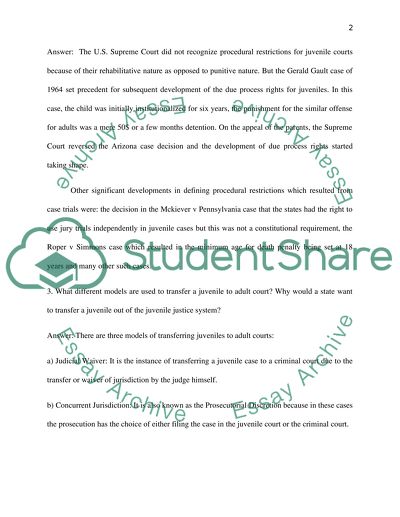Cite this document
(“The Historical Development of the Juvenile Court Essay”, n.d.)
Retrieved from https://studentshare.org/law/1449031-corrections-module
Retrieved from https://studentshare.org/law/1449031-corrections-module
(The Historical Development of the Juvenile Court Essay)
https://studentshare.org/law/1449031-corrections-module.
https://studentshare.org/law/1449031-corrections-module.
“The Historical Development of the Juvenile Court Essay”, n.d. https://studentshare.org/law/1449031-corrections-module.


